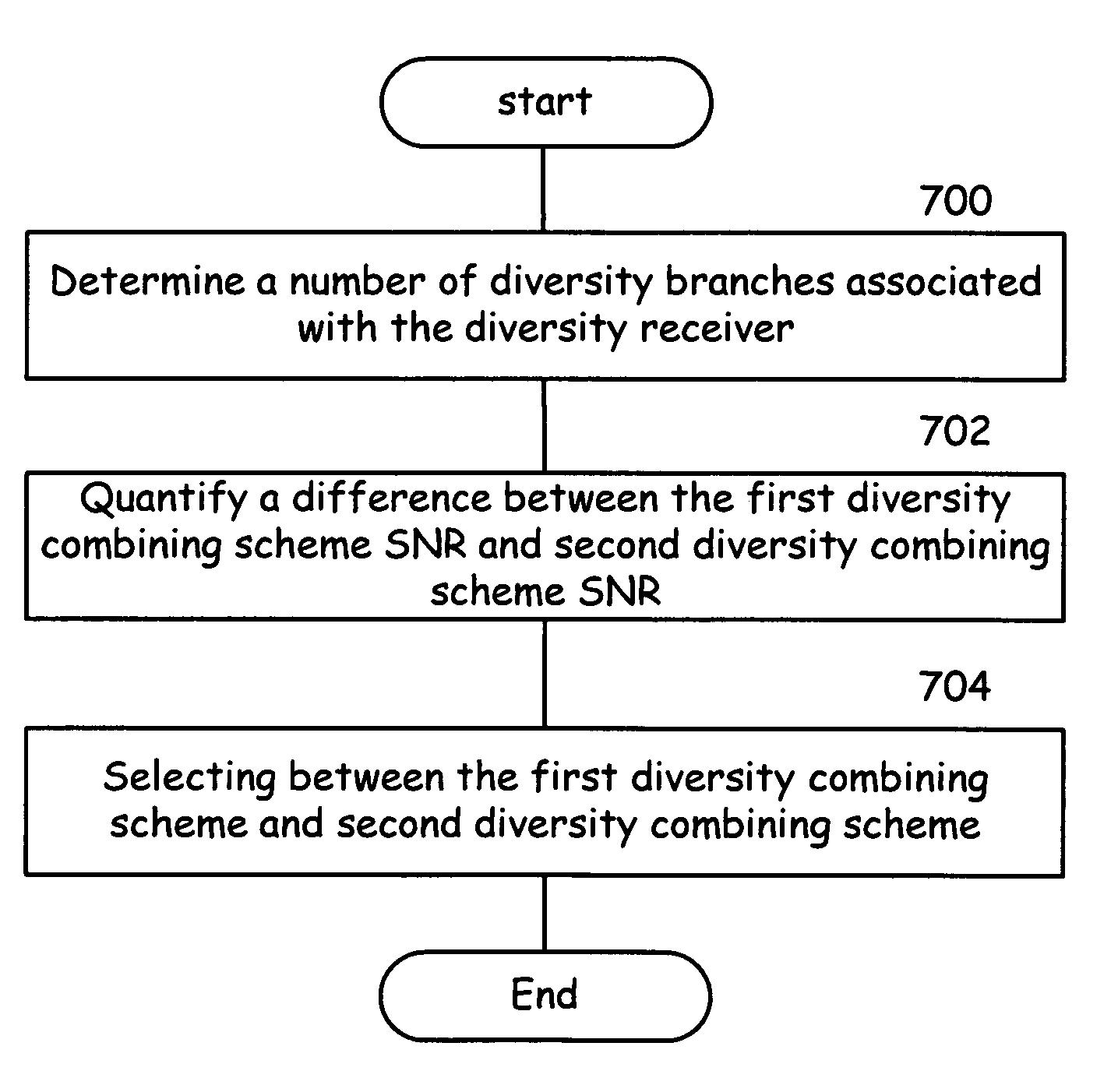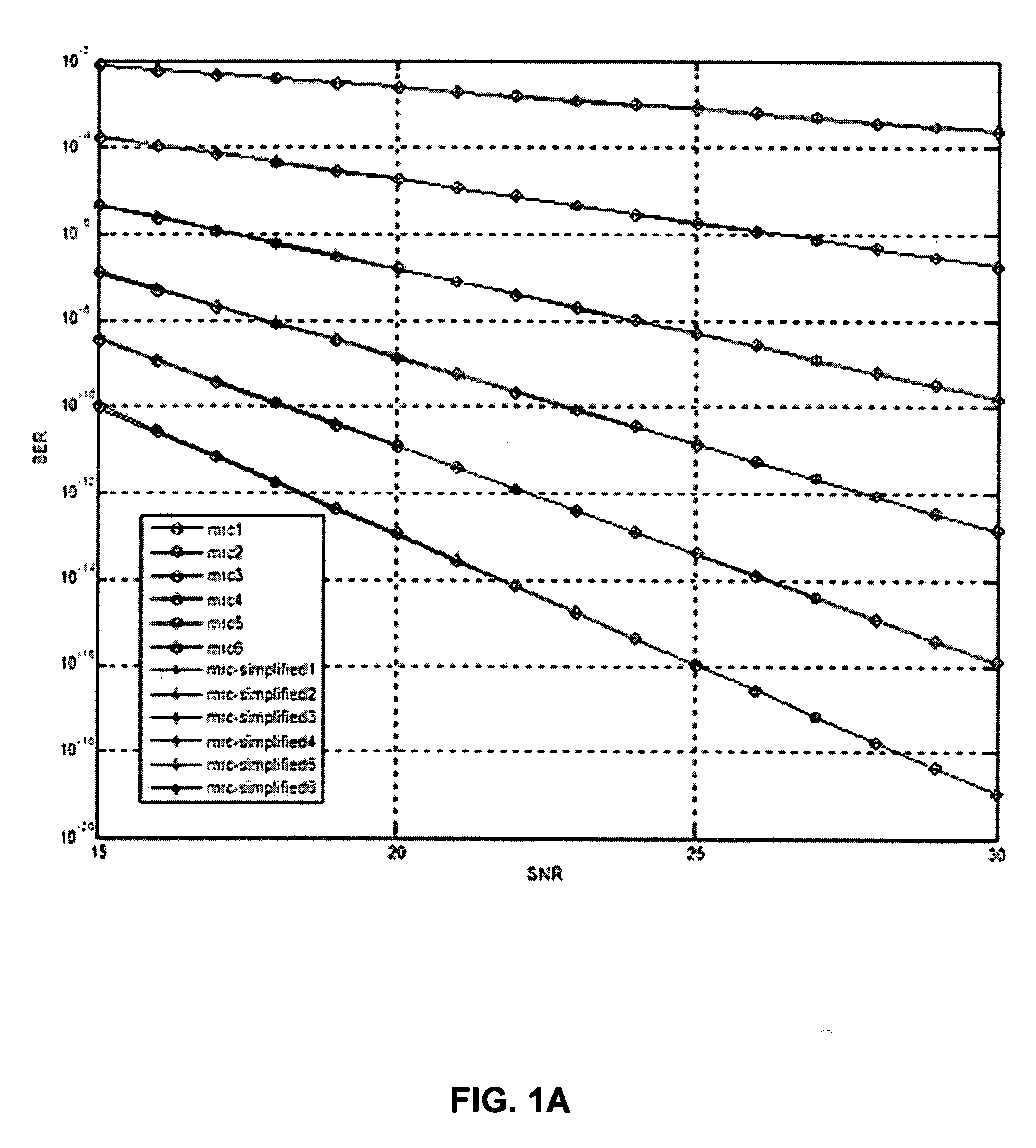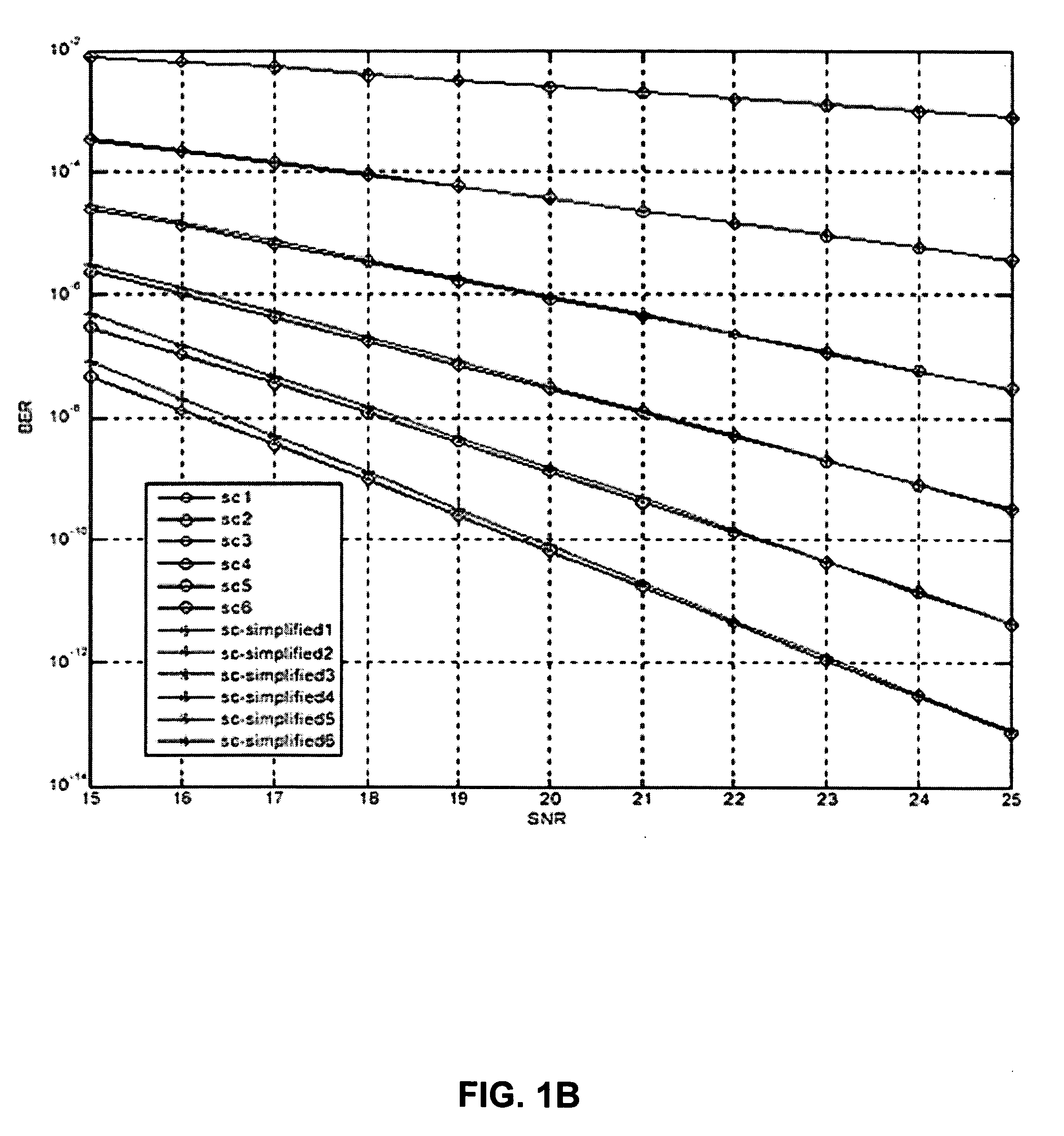Method operable to determine a signal to noise ratio gap between selection combining and maximal ratio combining for an arbitrary number of diversity branches
a signal-to-noise ratio and combining method technology, applied in diversity/multi-antenna system, diversity monitoring, polarisation/directional diversity, etc., can solve problems such as multiple impairments in communication systems, retransmission and different transmission paths, and signal loss in communication links
- Summary
- Abstract
- Description
- Claims
- Application Information
AI Technical Summary
Problems solved by technology
Method used
Image
Examples
Embodiment Construction
[0020] Preferred embodiments of the present invention are illustrated in the FIGS., like numerals being used to refer to like and corresponding parts of the various drawings.
[0021] The use of diversity techniques is considered the most effective way to combat multipath fading in wireless mobile communications or other like environments. Diversity techniques improve the performance, e.g., bit error rate (BER) from inversely proportional to the signal-to-noise ratio (SNR) caused by fading to inversely proportional to the SNR raised to its Lth power, where L is the number of diversity branches, without increasing transmit power or sacrificing BW efficiency. Selection combining (SC) and maximal ratio combining (MRC) are the most popular diversity schemes and have been adopted into every cellular standard. However, other combining schemes are known to those having skill in the art. The performance of SC and MRC, in terms of BER or SNR has been well studied. It is known that, MRC perform...
PUM
 Login to View More
Login to View More Abstract
Description
Claims
Application Information
 Login to View More
Login to View More - R&D
- Intellectual Property
- Life Sciences
- Materials
- Tech Scout
- Unparalleled Data Quality
- Higher Quality Content
- 60% Fewer Hallucinations
Browse by: Latest US Patents, China's latest patents, Technical Efficacy Thesaurus, Application Domain, Technology Topic, Popular Technical Reports.
© 2025 PatSnap. All rights reserved.Legal|Privacy policy|Modern Slavery Act Transparency Statement|Sitemap|About US| Contact US: help@patsnap.com



